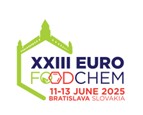Scientific journal
Journal of Food and Nutrition Research
Summary No. 4 / 2016
Kubincová, J. – Višňovský, J. – Rosenberg, M. – Hronská, H. – Chochulová, A. –
Application of high-temperature GC-MS for simultaneous identification and quantification of glycosidic forms of iridoids and flavonoids in plant samples
Journal of Food and Nutrition Research, 55, 2016, No. 4, s. 374-381
Jaroslav Blaško, Institute of Chemistry, Faculty of Natural Sciences, Comenius University, Mlynská Dolina CH-2, Ilkovičova 6, 84215 Bratislava, Slovakia. E-mail: blasko@fns.uniba.sk, tel. +421 2 602 96 330
Received 8 September 2016; 1st revised 14 November 2016; accepted 16 November 2016; published online 22 November 2016
Summary: High-temperature gas chromatography with mass spectrometry detection (HTGC-MS) was applied to separation and identification of iridoids (aucubin, catalpol), flavonoid aglycone (quercetin, apigenin, luteolin) and flavonoid glycosides (quercetin 3-O-alpha-D-arabinoside, quercetin 3-O-beta-D-galactoside and quercetin
Keywords: iridoid; flavonoid; glycoside; high-temperature gas chromatography; mass spectrometry; plant
Download:
(pdf, 352.23 Kb, 1711x)










